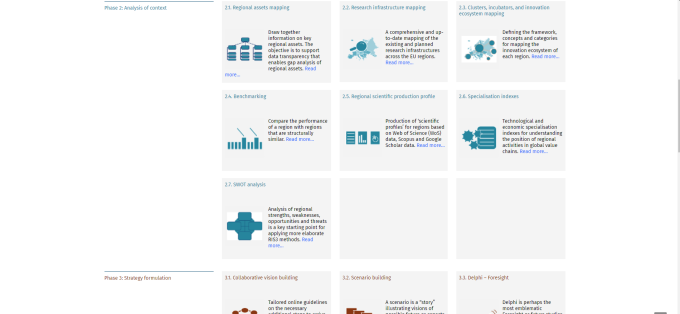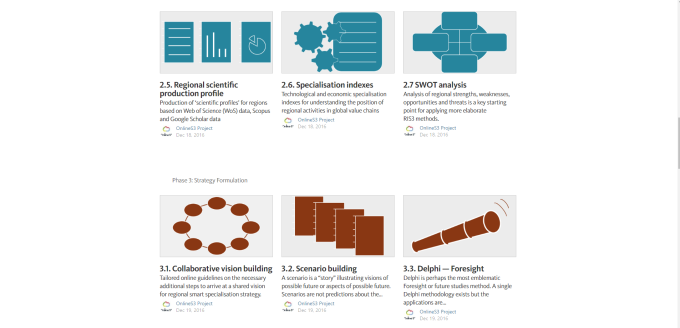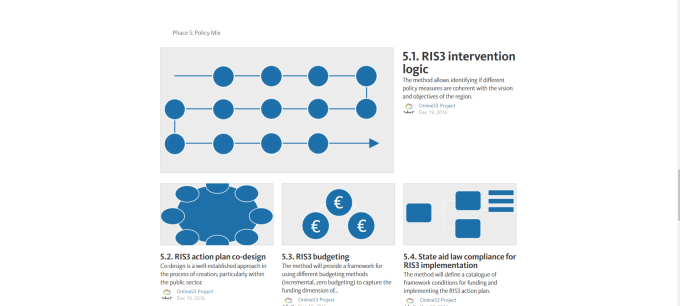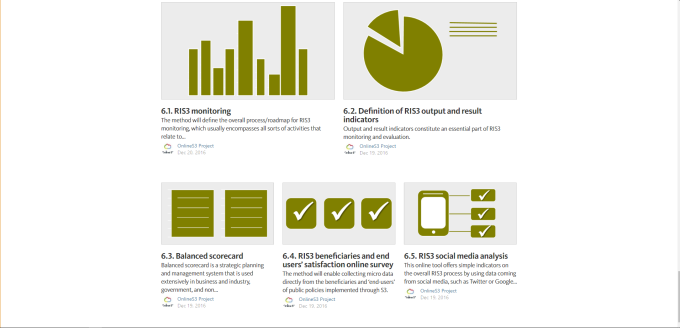
Books, special issues of academic journals, articles, and conference pp presentations, all dealing with concepts, theories, strategies, and applications of intelligent cities and smart cities.
_
BOOKS
Komninos N. (2008) Intelligent Cities and Globalisation of Innovation Networks, London and New York, Routledge.
Link: Routledge
Komninos N. (2002) Intelligent Cities: Innovation, knowledge systems and digital spaces, London and New York, Taylor and Francis, Spon Press.
Link: Taylor and Francis
Tsarchopoulos, P. (2013) Intelligent cities: Technologies, architectures, and governance of the digital space, PhD Dissertation, Aristotle University of Thessaloniki, Dept of Urban and Regional Development and Planning.
Download: Full Text (Greek Language), Abstract (English Language)
*
JOURNAL SPECIAL ISSUES
Schaffers, H., Komninos N., Ratti C. (eds) (2012) “Smart Applications for Smart Cities”, Journal of Theoretical and Applied Electronic Commerce Research, Vol. 2012, Νο 3.
Link: JTAER
Komninos, N. and Schaffers, H. (eds) (2012) “Smart Cities and the Future Internet in Europe”, Journal of the Knowledge Economy, Vol.3, No 3.
Link: JKEC, Springer
Komninos, N. (ed.) (2009) “Intelligent Clusters, Communities and Cities: Enhancing innovation with virtual environments and embedded systems”, International Journal of Innovation and Regional Development, Vol.1, No4.
Link: IJIRD, Inderscience
*
ARTCLES
Komninos, N., Kakderi, C., and Tsarchopoulos, P. (2014) “New services design for smart cities: a planning roadmap for user-driven innovation”, Proceedings of 2014 ACM Conference, International Workshop on Wireless and Mobile Technologies for Smart Cities (WiMobCity), pp. 29-39. (PDF)
Angelidou, M. (2014). Smart city policies: A spatial approach. Cities, 41, S3-S11. doi: 10.1016/j.cities.2014.06.007. Free access link (valid until 16 October 2014)
Tsamboulatidis, I. et al. (2013) ImproveMyCity – An open source platform for direct citizen-government communication, Conference proceedings. 2013-Improve-my-City-ATS
Komninos, N. (2013) Smart Cities and the Future Internet: Innovation ecosystems of embedded spatial intelligence, ICEIRD 2013 Conference Proceedings. 2013-ICEIRD-Smart Cities and the Future Internet
Komninos, N., Schaffers, H., and Pallot, M., (2013) Open Innovation and Smart Cities. Open Innovation Yearbook 2013, EU Publications, irectorate-General for Communications Networks, Content and Technology, pp. 34-42.Open Innovation Yearbook 2013
Angelidou, M., Gountaras, N., ansd Tarani, P. (2012) Engaging digital services for the creation of urban knowledge ecosystems: the case of Thermi, Greece, Int. J. of Knowledge-Based Development, Vol.3, No.4, pp.331 – 350. Link IJKBD.
Schaffers, H., Komninos, N., Pallot, M. (eds) (2012) “Smart Cities as Innovation Ecosystems Sustained by the Future Internet”, FIREBALL White Paper. Online FIREBALL-White-Paper.
Komninos, N., and Tsarchopoulos, P. (2012) “Towards Intelligent Thessaloniki: from an agglomeration of apps to smart districts”, Journal of Knowledge Economy, Springer Online First.
Komninos, N., Pallot, M., and Schaffers, H. (2012) “Special Issue on Smart Cities and the Future Internet in Europe”, Journal of Knowledge Economy, Springer Online First.
Pallot, M., Trousse, B., Senach, B., Shaffers, H. and Komninos, N. (2011)” Future Internet and Living Lab Research Domain Landscapes: Filling the Gap between Technology Push and Application Pull in the Context of Smart Cities” eChallenges e-2011 Conference Proceedings, Paul Cunningham and Miriam Cunningham (Eds), IIMC International Information Management Corporation. Link: e-Challenges 2011
Download: eChallenges-2011-Future Internet and Living Labs
Komninos, N., Shaffers, H. and Pallot, M. (2011)”Developing a Policy Roadmap for Smart Cities and the Future Internet” eChallenges e-2011 Conference Proceedings, Paul Cunningham and Miriam Cunningham (Eds), IIMC International Information Management Corporation. Link: e-Challenges 2011
Download: eChallenges-2011-A Policy Roadmap for Smart Cities
Komninos, N. (2011) “Intelligent Cities: Variable geometries of spatial intelligence”, Journal of Intelligent Buildings International, Vol. 3, pp. 1–17. Link: JIBI
Schaffers, H., Komninos, N., Pallot, M., Trousse, B., Nilsson M., and Oliveira, A. (2011)” Smart Cities and the Future Internet: Towards Cooperation Frameworks for Open Innovation”, The Future Internet, Lecture Notes in Computer Science, Vol. 6656, pp. 431-446. Download paper from here.
Κομνηνός Ν. (2011) ‘Ευφυείς πόλεις – ευφυείς συνοικίες: Ένα νέο παράδειγμα σχεδιασμού των πόλεων βασισμένο στην καινοτομία και ευρυζωνικότητα’, Τιμητικός Τόμος Α.Φ. Λαγόπουλου, Τμήμα Αρχιτεκτόνων ΑΠΘ. Download: Eyfyeis Poleis – Eyfyeis Synoikies
Intzesiloglou,G., Kakderi, C., Komninos, N., and Zaharis, N. (2011) “Identifying Successful Knowledge Exchange Practices between Academia & Industry in University-city Regions” Proceedings of International Conference for Entrepreneurship, Innovation and Regional Development, ICEIRD 2011: Download: Knowledge Exchange in University City-Regions-ICEIRD-2011
Komninos Nicos, Miariti Christina, Milossis Dimitris, Tsarchopoulos Panagiotis, Zaharis Nikos (2010) “Valorisation of Academic R&D: The INTERVALUE Platform”, Proceedings of International Conference for Entrepreneurship, Innovation and Regional Development ICEIRD 2010. Download paper: INTERVALUE for ICEIRD
Komninos, Nicos and Sefertzi, Elena (2009) “Intelligent Cities: R&D offshoring, web 2.0 product development and globalization of innovation systems” Paper presented at the Second Knowledge Cities Summit, Shenzhen, China, 5-7 November 2009. Download paper: Intelligent Cities-Shenzhen 2009-Komninos-Sefertzi. Download pp presentation: Intelligent Cities-Shenzhen 2009-Komninos-Sefertzi
Komninos, N. (2009) “Intelligent cities: Towards interactive and global innovation environments”, International Journal of Innovation and Regional Development, Vol. 1, No.4 pp. 337 – 355.
Link: IJIRD
Κομνηνός, Ν., Πάσσας, Ι., και Τσαρχόπουλος, Π. (2008) “Στρατηγική οικονομική ευφυΐα: Το Internet στην υπηρεσία της καινοτομίας”, Η Πληροφορική στη Βόρειο Ελλάδα. Download: stratigiki eyfyia-internet kai kainotomia
Komninos, N., Passas, I., Tarani, P., and Tsarchopoulos P. (2007) “Four platforms for intelligent cities”, IE07 Conference Proceedings, 486-494.
Link: IEEE
Komninos, N. (2007) “Cidades Inteligentes”, Interface Administracao Publica Local e Regional, Anuario 2007, 5-9.
Download: cidades-inteligentes
Κομνηνός, Ν. (2006) “Έξυπνες πόλεις: Συστήματα καινοτομίας και τεχνολογίες πληροφορίας στην ανάπτυξη των πόλεων”, Περιοδικό Αρχιτέκτονες, No 60, 72-75.
Download: exypnes-poleis
Κομνηνός, Ν., Πάσσας, Ι., και Τσαρχόπουλος, Π. (2006) “Ευφυείς πόλεις”, Η Πληροφορική στη Βόρειο Ελλάδα, No 2, 13-14.
Download:
Komninos N., (2006) “Intelligent by Design: Technology and intelligent cities in Saudi Arabia”, Think: Global Issues in Perspective, Νο 9, 6-13.
Download: technology-and-intel-cities-in-Saudi-Arabia
Komninos, N., Sefertzi, E., and Tsarchopoulos P. (2006) “Virtual innovation environment for the exploitation of R&D”, Intelligent Environments 06, Institution of Engineering and Technology, Vol. 2, pp. 95-104. (Download:virtual-innovation-environment-for-the-exploitation-of-rd-ie06)
Link: IEEE
Komninos, N. (2006) “The Architecture of Intelligent Cities”, Intelligent Environments 06, Institution of Engineering and Technology, Vol. 1, pp. 13-20. (Download: The Architecture of Intelligent Cities)
Link: IEEE
Bourgogne P., Guth, M., Pelayo, E., Halvorsen, K., Komninos, N. Oswaldo, A. (2006) Strategic Intelligence and Innovative Clusters, Regional Council of Lorraine, Interreg IIIC, 1-58.
Download: English: STRATINC-strategic-intelligence – German: STRATINC-strategische-intelligenz– Spanish: STRATINC-inteligencia-estrategica– French version: STRATINC-intelligence-strategique
Komninos, N. (2006) “Intelligent Cities”, The Encyclopedia of Digital Government, Ari-Veikko Anttiroiko and Matti Malkia (eds), London, Idea Group Reference, 1100-1104.
Link: EDG
Komninos, N. (2006) “Virtual Innovation Environment”, The Encyclopedia of Digital Government, Ari-Veikko Anttiroiko and Matti Malkia (eds), London, Idea Group Reference, 1601-1605.
Link: EDG
Komninos, N. (2004) “Regional Intelligence: Distributed localized information systems for innovation and development”, International Journal of Technology Management, Vol.28, No 3-4-5-6, 483-506.
Link: IJTM
Κομνηνός, Ν. (2004) “Περιφέρειες αριστείας στην Ευρώπη: το νέο πρότυπο περιφερειακής ιεραρχίας και ανάπτυξης”, Ζητήματα Χωρικής Ανάπτυξης, επιμ. Γ. Καυκαλάς, Αθήνα, Εκδόσεις Κριτική, 73-105.
Download: perifereies-aristeias-stin-eyropi
*
CONFERENCE PRESENTATIONS
“Green Growth: From LEED-ND to Smart Environments for Resource Saving”, S3 Platform, 11th Peer Review Workshop, Crete, September 2013
Download: 2013-09-Green Growth – From LEED to Smart Environments
“Ευφυής Θεσσαλονίκη” Conference of Hellenic Federation of Enterprises, ‘Sustainable Cities’, Thessaloniki, 7 December 2012.
Download: Ευφυής Θεσσαλονίκη-Συμπόσιο ΣΕΒ για Βιώσιμες Πόλεις
“Smart Cities: Towards Distributed Embedded Sensors, Open Source and Cloud-based Solutions”, IEEE International Conference on RFID Technology and Applications, 5-7 November 2012, Nice France.
Download: Smart Cities. Towards distributed embedded sensors, OS and Cloud
“Smart Cities and the Future Internet: Innovation for All within Smart Environments”, 11th Students Spring Symposium, Thessaloniki, 18 May 2012.
Download: Smart Cities and Future Internet-Innovation for All
“A Planning roadmap for intelligent cities: case study on revitalizing a commercial district”, RSA European Conference 2012, 13th – 16th May 2012, Delft University of Technology, Delft, The Netherlands.
Download: RSA_Delft_A planning roadmap for intelligent cities
“Planning for Intelligent Cities: The integration problem”, eChallenges 2011 Conference, Florence, 26-28 October 2011.
Download: Planning for Intelligent Cities-eChallenges 2011
“Living Labs – Intelligent Cities – Smart Regions: Innovation beyond the Institutional Paradigm”, MEDLAB Final Conference, Thessaloniki, 3 and 4 October 2011.
Donwload: LL-Intel Cities-Smart Regions. Innovation beyond the Institutional Paradigm
“What Makes Cities Smart”, Creating Smarter Cities 2011 Conference, Edinburgh Napier University, Edinburgh, 30 June and 1 July 2011.
Download: What makes cities smart-Edinburgh 30062011
“MedLab: Mediterranean Living Lab for Territorial Innovation”, CENTRAL LAB kick-off meeting, Ptuj, Slovenia 30 May 2011.
Download: MEDLAB-Ptuj Slovenia
“Intelligent Cities and the PEOPLE Project”, MEDLAB workshop on Living Labs and the Future Internet: Towards smart cities and regions, Larnaca, 18 October 2010.
Download: Intelligent Cities and the PEOPLE Project
“Ηλεκτρονική-ευφυής πόλη του μέλλοντος” CYTA Conference – World Telecommunication Day 2010, Nicosia Cyprus, 20 May 2010.
Download: Electronic-Intelligent City-CYTA-2010
“Ευφυείς πόλεις: Χωρικοί μετασχηματισμοί των συστημάτων καινοτομίας”, Department of Regional Planning and Development Engineers, Veroia, 13 January 2010.
Download: Intel Cities-Spatial transformation of innovation systems-Veroia
“Ευφυείς Πόλεις: Στρατηγικές για παγκόσμια και διαδραστικά συστήματα καινοτομίας”, 2ο Congress of the Department of City and Regional Planning and Development, Volos, 24-27 September 2009.
Download: Intel Cities-2nd Congress CRP-Volos-250909
“Thessaloniki Living Lab: Designing and Testing Applications for Intelligent Cities” MEDLAB kick-off meeting, Thessaloniki, 27-28 April 2009.
Download: ll-thessaloniki-designs-for-intelligent-cities
“Globalisation of Innovation and policy measures for open systems of innovation”, IRE Workshop, Madrid, 16-18 April 2008.
Download: globalisation-of-innovation-networks-and
“Intelligent Cities: Building 3rd Generation Systems of Innovation”, MSc Technology, Innovation and Entrepreneurship, City – Affiliated Institution of the University of Sheffield, 13 January 2008.
Download: intel-cities-overview
“Ευφυείς πόλεις: Ένα νέο παράδειγμα ανάπτυξης και σχεδιασμού των πόλεων”, Postgraduate seminar URENIO, 9 November 2007.
Download: eyfyeis-poleis-ena-neo-paradigma
“Four platforms for intelligent cities” 3rd IET International Conference on Intelligent Environments (IE’07), Ulm, 24-25 September, 2007.
Download: four-platforms-for-intelligent-cities-ie07
“Innovative Clusters and Strategic Intelligence”, STRATINC Final Conference, Brussels, 7 September 2006.
Download: clusters-and-intelligence-stratinc-conf
“Collaborative innovation and inter-regional networks”, EU Conference on Regions for Economic Change – Innovating through EU Regional Policy, Brussels, 12 – 13 June 2006.
Download: confe-proceeding-regions-econ-change
“The Architecture of intelligent cities” 2nd International Conference on Intelligent Environments (IE’ 06), Athens, 5-6 July 2006.
Download: architecture-of-intel-cities-ie06
“META-FORESIGHT: Software Platform and Tools”, Metaforesight Conference on Integrating Intelligence, Caceres, Spain, 6 – 7 October 2005.
Download: metaforesight-caceres-conf
“META-FORESIGHT: Integrating Regional Intelligence”, 4th IRE Plenary Conference, Ljubljana, 7-8 June 2005.
Download: metaforesight-ire-conf-ljubljana
“Περιοχικά Συστήματα Καινοτομίας: Από τα Clusters στις Ευφυείς Περιφέρειες” International Conference on Good Practices of Entrepreneurship and Innovation, Thessaloniki, 10-11 December 2004.
Download:clusters-to-intel-cities-orie-conf











































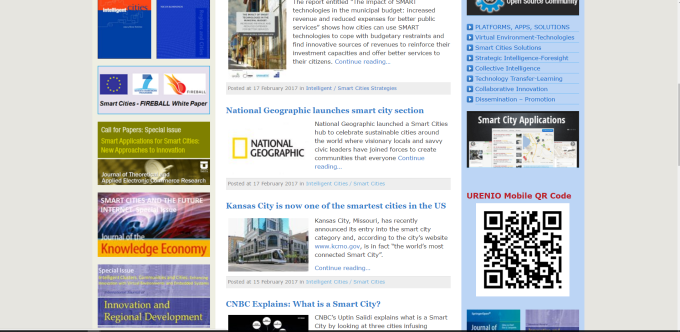
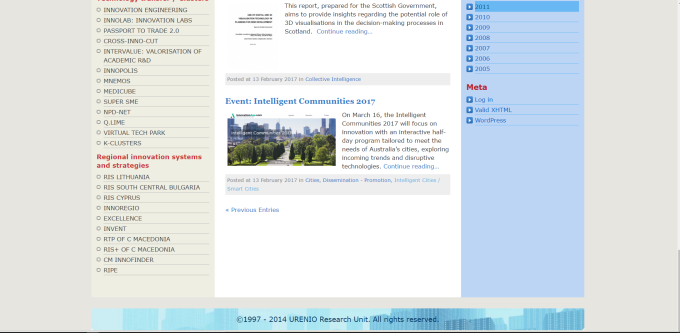









 Digital Innovation Centre is an on-line resource of innovation tools addressed mainly to companies and entrepreneurs for the development of new products and the management of innovation activities. The Digital Innovation Centre includes three main components:
Digital Innovation Centre is an on-line resource of innovation tools addressed mainly to companies and entrepreneurs for the development of new products and the management of innovation activities. The Digital Innovation Centre includes three main components:

 Benchmarking is the process of improving performance by continuously identifying, understanding, and adapting outstanding practices and processes of other companies to increase competitive strength. The benchmarking process involves comparing a company’s performance on a set of measurable parameters of strategic importance against companies known to have achieved best performance on those indicators.
Benchmarking is the process of improving performance by continuously identifying, understanding, and adapting outstanding practices and processes of other companies to increase competitive strength. The benchmarking process involves comparing a company’s performance on a set of measurable parameters of strategic importance against companies known to have achieved best performance on those indicators.






 Komninos, N., (2002) Intelligent Cities: Innovation, knowledge systems and digital spaces, London and New York: Taylor and Francis, Spon Press.
Komninos, N., (2002) Intelligent Cities: Innovation, knowledge systems and digital spaces, London and New York: Taylor and Francis, Spon Press.
 Komninos, N., (1998) Technopolis and Development Strategies in Europe, Athens: Gutenberg.
Komninos, N., (1998) Technopolis and Development Strategies in Europe, Athens: Gutenberg. Sefertzi, E., (ed.) (1998), Innovation: System-areas, technology transfer, and innovative development in Greece, Athens: Gutenberg.
Sefertzi, E., (ed.) (1998), Innovation: System-areas, technology transfer, and innovative development in Greece, Athens: Gutenberg.



 Elias G. Carayannis is Senior Visiting Professor affiliated with URENIO. He is full Professor of Science, Technology, Innovation and Entrepreneurship, as well as co-Founder and co-Director of the Global and Entrepreneurial Finance Research Institute (GEFRI) and Director of Research on Science, Technology, Innovation and Entrepreneurship, European Union Research Center, (EURC) at the Department of Information Systems & Technology Management, George Washington University in Washington, DC. His teaching and research activities focus on the areas of strategic Government-University-Industry R&D partnerships, technology road-mapping, technology transfer and commercialization, international science and technology policy, technological entrepreneurship and regional economic development.
Elias G. Carayannis is Senior Visiting Professor affiliated with URENIO. He is full Professor of Science, Technology, Innovation and Entrepreneurship, as well as co-Founder and co-Director of the Global and Entrepreneurial Finance Research Institute (GEFRI) and Director of Research on Science, Technology, Innovation and Entrepreneurship, European Union Research Center, (EURC) at the Department of Information Systems & Technology Management, George Washington University in Washington, DC. His teaching and research activities focus on the areas of strategic Government-University-Industry R&D partnerships, technology road-mapping, technology transfer and commercialization, international science and technology policy, technological entrepreneurship and regional economic development. Dr. Yiannis FALAS has a Mining Engineer degree from the National Technical University of Athens and a PhD on ”Clusters in Traditional Sectors” from the Architectural School of Aristoteles University of Thessaloniki, Greece. His research focuses on European clusters, mainly of traditional sectors of the economy and lately of the wood/biomass/bioenergy sector. After graduation, he worked in the Region of Western Macedonia, as Assistant Co-ordinator of Transport Infrastructure program (1st and 2nd C.S.F.). He has then been the project manager of the Regional Innovation Strategy, RIS and RIS+ Projects, and the “Knowledge clusters” Innovative Actions Program of W.M.
Dr. Yiannis FALAS has a Mining Engineer degree from the National Technical University of Athens and a PhD on ”Clusters in Traditional Sectors” from the Architectural School of Aristoteles University of Thessaloniki, Greece. His research focuses on European clusters, mainly of traditional sectors of the economy and lately of the wood/biomass/bioenergy sector. After graduation, he worked in the Region of Western Macedonia, as Assistant Co-ordinator of Transport Infrastructure program (1st and 2nd C.S.F.). He has then been the project manager of the Regional Innovation Strategy, RIS and RIS+ Projects, and the “Knowledge clusters” Innovative Actions Program of W.M. Christina KAKDERI (MSc, PhD) is a regional economist and a researcher focusing on systems of innovation and smart innovation environments (national and regional innovation systems, technology policy, social networks, intelligent cities/districts). Since 2005 she has been involved in numerous EU and national funded projects related to spatial development and innovation ecosystems.
Christina KAKDERI (MSc, PhD) is a regional economist and a researcher focusing on systems of innovation and smart innovation environments (national and regional innovation systems, technology policy, social networks, intelligent cities/districts). Since 2005 she has been involved in numerous EU and national funded projects related to spatial development and innovation ecosystems.
 Stratos MANOS is an Architect Engineer and PhD candidate at the Aristotle University of Thessaloniki (Thesis title: The Urban Regeneration and Internationalisation of Cities in Europe).
Stratos MANOS is an Architect Engineer and PhD candidate at the Aristotle University of Thessaloniki (Thesis title: The Urban Regeneration and Internationalisation of Cities in Europe).
 Nancy (Anastasia) MARTZOPOULOU is a Mechanical and Agricultural Engineer and currently belongs to the academic staff of the Department of Urban and Regional Planning – School of Architecture – Faculty of Engineering – AUTH, where she completed her PhD thesis entitled “Energy and environmental management in industrial concentrations”.
Nancy (Anastasia) MARTZOPOULOU is a Mechanical and Agricultural Engineer and currently belongs to the academic staff of the Department of Urban and Regional Planning – School of Architecture – Faculty of Engineering – AUTH, where she completed her PhD thesis entitled “Energy and environmental management in industrial concentrations”. Dimitris MILOSSIS is electrical engineer with studies in the School of Technology, University of Patra, Greece. He has a Diploma in Electronics for Telecommunications from the University of Southampton, England and a Masters cource in Business Adninistration (MBA) in University of Macedonia (Thessaloniki, Greece). He is a PhD candidate at the Department of Urban and Regional Planning of Aristotle University of Thessaloniki on the topic of “Regional Innovation Systems”.
Dimitris MILOSSIS is electrical engineer with studies in the School of Technology, University of Patra, Greece. He has a Diploma in Electronics for Telecommunications from the University of Southampton, England and a Masters cource in Business Adninistration (MBA) in University of Macedonia (Thessaloniki, Greece). He is a PhD candidate at the Department of Urban and Regional Planning of Aristotle University of Thessaloniki on the topic of “Regional Innovation Systems”. Nitsa PAPADOPOULOU received a Masters in Business Administration from St John”s University U.S.A, specializing in strategic business planning and marketing. Her undergraduate studies are in Linguistics and Education.
Nitsa PAPADOPOULOU received a Masters in Business Administration from St John”s University U.S.A, specializing in strategic business planning and marketing. Her undergraduate studies are in Linguistics and Education. Maria PARASKEVA studied at the Aristotle University of Thessaloniki. Before her current position, she was a project manager at the Vocational Training Centre (VTC) for seven years. She was also the head of the department that was responsible for combating people’s exclusion from occupation, and for the department that aimed at promoting graduates to labor.
Maria PARASKEVA studied at the Aristotle University of Thessaloniki. Before her current position, she was a project manager at the Vocational Training Centre (VTC) for seven years. She was also the head of the department that was responsible for combating people’s exclusion from occupation, and for the department that aimed at promoting graduates to labor. Isidoros A. PASSAS has a Bachelor of engineering on computer systems from the School of Engineering of University of Sussex in U.K. He is in the process of accomplishing his M.B.A. in University of Sheffield in the U.K. His scientific interests are in the application of information technology in business processes of SMEs, business and cluster intelligence, innovation measurement and benchmarking, and web 2.0 new product development, and website assessmenmt.
Isidoros A. PASSAS has a Bachelor of engineering on computer systems from the School of Engineering of University of Sussex in U.K. He is in the process of accomplishing his M.B.A. in University of Sheffield in the U.K. His scientific interests are in the application of information technology in business processes of SMEs, business and cluster intelligence, innovation measurement and benchmarking, and web 2.0 new product development, and website assessmenmt. Maria S. Schoina is a graduate of the Department of Civil Engineering of Aristotle University of Thessaloniki. After graduation she was involved in several structural design studies as self-employed or in cooperation with a design and construction firm. She has also been working as a scientific researcher at the Universities of Thessaly and Western Macedonia, in a series of projects and studies in the fields of Regional Development, Innovation, Management of Technology and Tourism Management.
Maria S. Schoina is a graduate of the Department of Civil Engineering of Aristotle University of Thessaloniki. After graduation she was involved in several structural design studies as self-employed or in cooperation with a design and construction firm. She has also been working as a scientific researcher at the Universities of Thessaly and Western Macedonia, in a series of projects and studies in the fields of Regional Development, Innovation, Management of Technology and Tourism Management. Elena SEFERTZI received a master of sociology from the University of Paris Rene Descartes-Sorbonne, a post-graduate degree (DEA), and a doctorate from the Ecole des Hautes Etudes en Science Sociales, Paris.
Elena SEFERTZI received a master of sociology from the University of Paris Rene Descartes-Sorbonne, a post-graduate degree (DEA), and a doctorate from the Ecole des Hautes Etudes en Science Sociales, Paris. Paraskevi TARANI studied architecture at the School of Engineering in the Aristotle University of Thessaloniki. She is a PhD candidate at the Department of Urban and Regional Planning, on the topic “The European Cities in the New Economy of Knowledge”.Her research interests include the area of urban and regional innovation, urban theory and planning.
Paraskevi TARANI studied architecture at the School of Engineering in the Aristotle University of Thessaloniki. She is a PhD candidate at the Department of Urban and Regional Planning, on the topic “The European Cities in the New Economy of Knowledge”.Her research interests include the area of urban and regional innovation, urban theory and planning. Panagiotis C. TSARCHOPOULOS received the Diploma degree in Electrical Engineering and the Ph.D. degree in Urban and Spatial Planning from Aristotle University of Thessaloniki, Greece, in 1992 and 2013, respectively.
Panagiotis C. TSARCHOPOULOS received the Diploma degree in Electrical Engineering and the Ph.D. degree in Urban and Spatial Planning from Aristotle University of Thessaloniki, Greece, in 1992 and 2013, respectively.








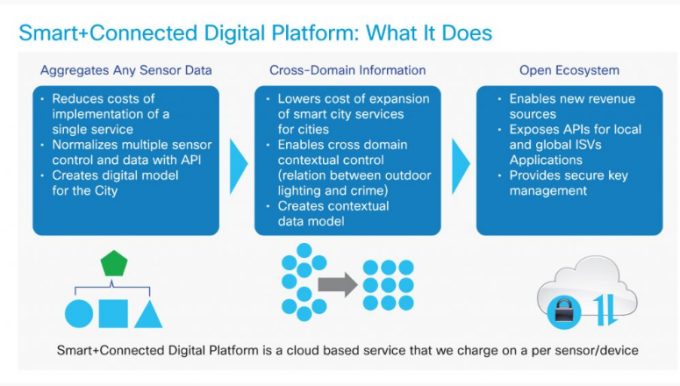
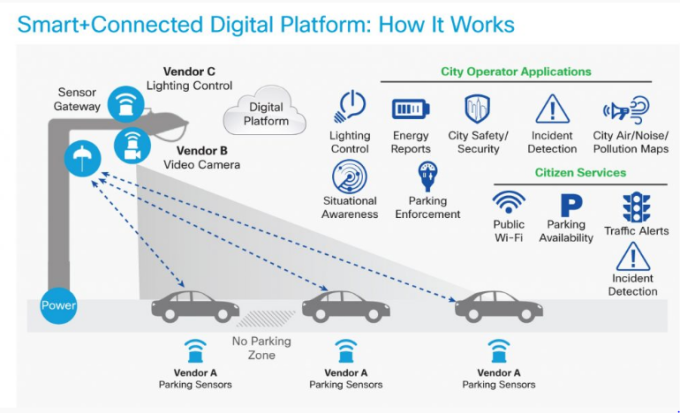




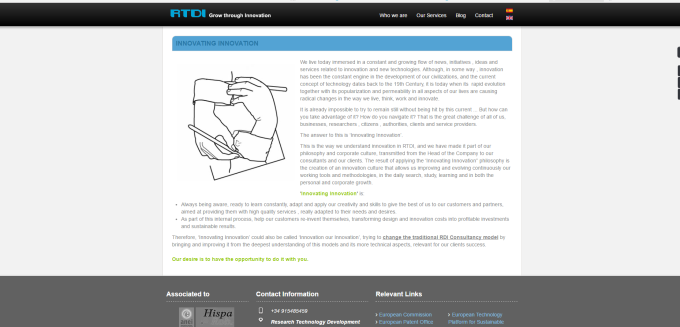
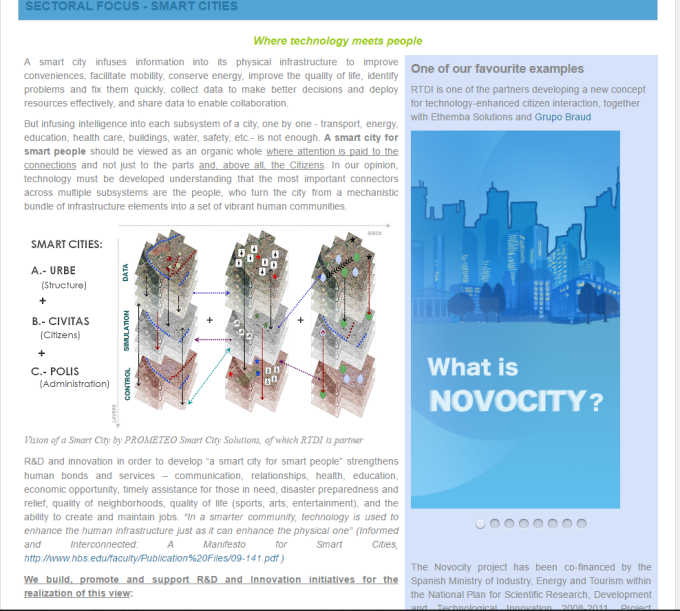
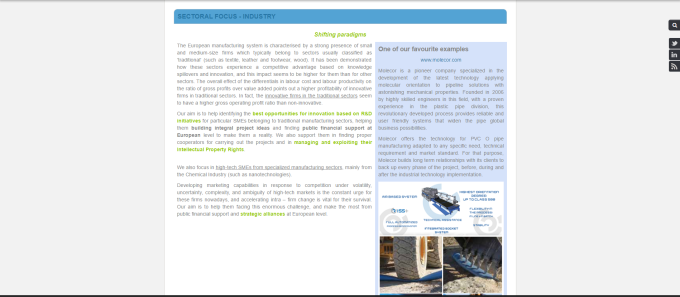
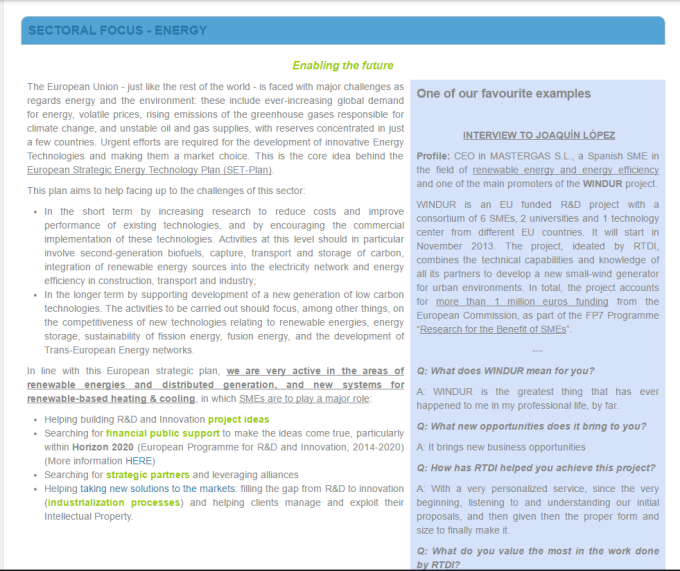
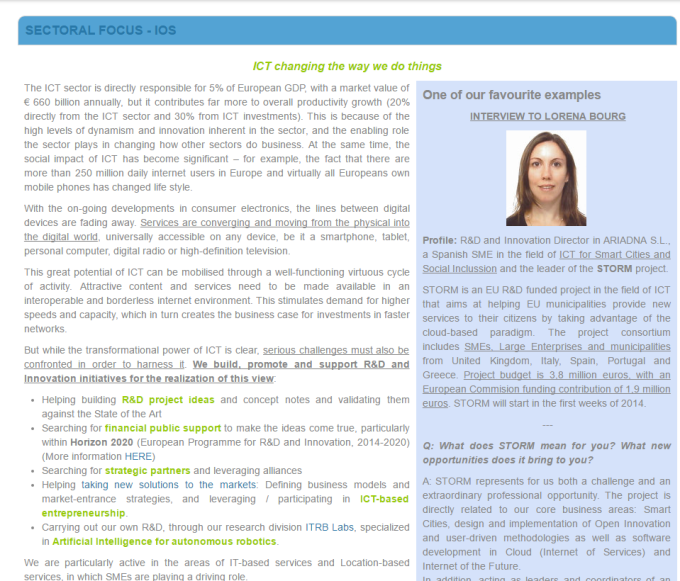
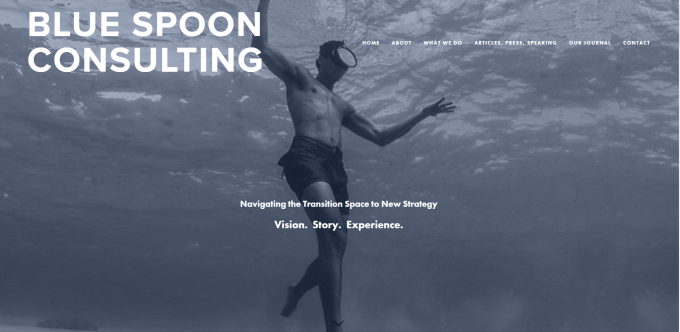





 Online consultation on 29 RIS3 methods. For each method you will find a description and then follows the area of comments.
Online consultation on 29 RIS3 methods. For each method you will find a description and then follows the area of comments.
 Web-based tool that allows RIS3 managers to create visually attractive infographics.
Web-based tool that allows RIS3 managers to create visually attractive infographics.  Invite RIS3 stakeholders to use online deliberation functionalities specifically tailored for EDP.
Invite RIS3 stakeholders to use online deliberation functionalities specifically tailored for EDP. Enable participatory deliberation using functionality like argument mapping software.
Enable participatory deliberation using functionality like argument mapping software.  Οverview of ERDF regulations and EU processes of selecting and funding projects.
Οverview of ERDF regulations and EU processes of selecting and funding projects.  Draw together information on key regional assets. The objective is to support data transparency that enables gap analysis of regional assets.
Draw together information on key regional assets. The objective is to support data transparency that enables gap analysis of regional assets.  A comprehensive and up-to-date mapping of the existing and planned research infrastructures across the EU regions.
A comprehensive and up-to-date mapping of the existing and planned research infrastructures across the EU regions.  Defining the framework, concepts and categories for mapping the innovation ecosystem of each region.
Defining the framework, concepts and categories for mapping the innovation ecosystem of each region.  Compare the performance of a region with regions that are structurally similar.
Compare the performance of a region with regions that are structurally similar.  Production of ‘scientific profiles’ for regions based on Web of Science (WoS) data, Scopus and Google Scholar data.
Production of ‘scientific profiles’ for regions based on Web of Science (WoS) data, Scopus and Google Scholar data.  Technological and economic specialisation indexes for understanding the position of regional activities in global value chains.
Technological and economic specialisation indexes for understanding the position of regional activities in global value chains.  Analysis of regional strengths, weaknesses, opportunities and threats is a key starting point for applying more elaborate RIS3 methods.
Analysis of regional strengths, weaknesses, opportunities and threats is a key starting point for applying more elaborate RIS3 methods.  Tailored online guidelines on the necessary additional steps to arrive at a shared vision for regional smart specialisation strategy.
Tailored online guidelines on the necessary additional steps to arrive at a shared vision for regional smart specialisation strategy.  A scenario is a “story” illustrating visions of possible future or aspects of possible future. Scenarios are not predictions about the future but rather similar to simulations of some possible futures.
A scenario is a “story” illustrating visions of possible future or aspects of possible future. Scenarios are not predictions about the future but rather similar to simulations of some possible futures.  Delphi is perhaps the most emblematic Foresight or future studies method. A single Delphi methodology exists but the applications are diverse.
Delphi is perhaps the most emblematic Foresight or future studies method. A single Delphi methodology exists but the applications are diverse.  The method will provide a roadmap for the implementation of EDP. It includes industry activities and groups, stakeholders and business leaders involved in the EDP process, the communication of conclusions about the opportunities emerged by the regional and national authorities.
The method will provide a roadmap for the implementation of EDP. It includes industry activities and groups, stakeholders and business leaders involved in the EDP process, the communication of conclusions about the opportunities emerged by the regional and national authorities.  This method is applied to detect possible industry segments in which regions present increased extroversion, in terms of exports, attraction of FDI, or other forms of regional openness.
This method is applied to detect possible industry segments in which regions present increased extroversion, in terms of exports, attraction of FDI, or other forms of regional openness.  This method will allow for calculating the Related/Unrelated variety entropy indexes. It will compare 2-digit and 5-digit sector shares (%) and will estimate the entropy index for regions.
This method will allow for calculating the Related/Unrelated variety entropy indexes. It will compare 2-digit and 5-digit sector shares (%) and will estimate the entropy index for regions.  The method allows identifying if different policy measures are coherent with the vision and objectives of the region.
The method allows identifying if different policy measures are coherent with the vision and objectives of the region.  Co-design is a well-established approach in the process of creation, particularly within the public sector.
Co-design is a well-established approach in the process of creation, particularly within the public sector.  The method will provide a framework for using different budgeting methods (incremental, zero budgeting) to capture the funding dimension of the RIS3 action plan and the needs for funding across the defined implementation period.
The method will provide a framework for using different budgeting methods (incremental, zero budgeting) to capture the funding dimension of the RIS3 action plan and the needs for funding across the defined implementation period.  State aid law is part of EU competition law and aims at constraining the funding possibilities of public authorities to sustain competition within the internal market.
State aid law is part of EU competition law and aims at constraining the funding possibilities of public authorities to sustain competition within the internal market. The method will enable RIS3 stakeholders to assess calls for projects under SF operational programmes that are made by regional authorities.
The method will enable RIS3 stakeholders to assess calls for projects under SF operational programmes that are made by regional authorities.  Online visualisation tool that teases out information about regional technological trends using grant data that is collected from S3 programmes and initiatives.
Online visualisation tool that teases out information about regional technological trends using grant data that is collected from S3 programmes and initiatives.  Online data tool in the form of a data repository that allows for a finely grained tracking of projects and initiatives implemented in each region with a link to respective S3 priorities.
Online data tool in the form of a data repository that allows for a finely grained tracking of projects and initiatives implemented in each region with a link to respective S3 priorities.  The method will define the overall process/roadmap for RIS3 monitoring, which usually encompasses all sorts of activities that relate to the collection and processing of information about the achievement of expected results and the degree of implementation of policy measures.
The method will define the overall process/roadmap for RIS3 monitoring, which usually encompasses all sorts of activities that relate to the collection and processing of information about the achievement of expected results and the degree of implementation of policy measures.  Output and result indicators constitute an essential part of RIS3 monitoring and evaluation.
Output and result indicators constitute an essential part of RIS3 monitoring and evaluation.  Balanced scorecard is a strategic planning and management system that is used extensively in business and industry, government, and non-profit organisations worldwide.
Balanced scorecard is a strategic planning and management system that is used extensively in business and industry, government, and non-profit organisations worldwide.  The method will enable collecting micro data directly from the beneficiaries and ‘end-users’ of public policies implemented through S3.
The method will enable collecting micro data directly from the beneficiaries and ‘end-users’ of public policies implemented through S3.  This online tool offers simple indicators on the overall RIS3 process by using data coming from social media, such as Twitter or Google trends.
This online tool offers simple indicators on the overall RIS3 process by using data coming from social media, such as Twitter or Google trends. 
